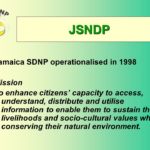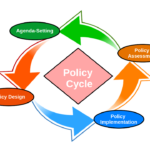Background
The Sustainable Development Networking Programme (SDNP) was launched by UNDP in1992 in direct response to the implementation of Agenda 21, established at the UN Earth Summit in Rio de Janeiro. A UNDP global programme, SDNP focused on Chapters 27, 37 and 40 of the Agenda, while at the same time calling for increased involvement of civil society and non-state actors in national policy and decision-making processes. The programme aimed at developing user-friendly information resources and services, strengthening of electronic networks, and the better use of indigenous knowledge – taking advantage of the then emerging Internet platform and the Word Wide Web, to encourage greater access to existing information.
SDNP run from 1992 to 2002 and supported in various ways close to 80 countries and brought the benefits of the news ICTs to people in the developing world so they could be part and parcel of local and national sustainable development processes. During its implementation, two independent evaluations were undertaken. And in 2004 a final evaluation, which included 8 national evaluations was completed.
Context
The last 5 to 7 years have seen yet another dramatic change in the technology and Internet environment. For starters, we have seen the emergence of the so-called Web 2.0 where users provide their own content that can reach millions if not billions in real time. However, the growth of Web 2.0 is limited to a large extent by the growth of Internet access. Secondly, we are witnessing the amazing growth in the deployment and use of mobile technologies. Latest data indicates that there are over 6 billion mobile subscribers in the world (against 2.5 billion Internet users) with 75% of them living in developing countries (estimates from the ITU).
These two rapidly emerging platforms, working together in many cases, have ended empowering non-state actors to the point of generating new social movements that, according to many observers. have been able to topple non-democratic governments. Although fiction and reality seem to be mixed in these statements, there in no doubt that this second wave of the “democratization” to the access and use of information and communication channels have empowered civil society actors and given voice to millions who before had none. The questions here is to what degree this has in effect happened and on what scale. By the same token, this same empowerment process has challenge the dominance of traditional and mostly corporate media outlets that are now trying to quickly adjust to the new realities of the 21st century -and the need to develop new business models if they want to survive.
Objective
Participation of non-state actors in sustainable development processes was one of the key objectives and outputs of SDNP. Every national SDNP was encouraged to promote a multi-stakeholder approach where all sectors were represented and had equal voice and decision-making power. And technologies (Web 1.0 or less!) played a role here, to a degree. All this sounds all too familiar when we compare it with waht we hear and read about Web 2.0.
The objective of reconsidering SDNP’s impact in the year where the original Rio process will be celebrating its 20th anniversary is to generate new comparative knowledge than can shed light on the actual relevance of the new ICTs in participation and multi-stakeholder processes. As many of SDNP’s principles and objectives and some of its actual outputs and outcomes strongly resonate within a web 2.0/mobile technologies paradigm – if we can call it that, then it is feasible to look back in retrospect and consider if programmes and processes such as SDNP are still relevant today; and if so how
Core Issues
Some of the issues that the process can consider include the following:
- What is the actual role of technologies, old and new, in multi-stakeholder processes
- Are the new Web 2.0/mobile technologies really more effective in such processes?
- Would a SNDP in the 21st be more effective if if could have used the new platforms?
- In terms of decision-making process and impacting development agendas, what is the comparative analysis between old and new platforms, development processes and enhancing democratic governance?
- Is the current “privatization” of social networks and the public sphere a set back in these processes?
- What is the actual relevance, if any, of Free/Open Source in the process, both in the 1990s and nowadays?
Additional issues can be added here, all depending on how we want to limit the scope of the work.
Options
In terms of the actual work to be completed, we have the following options:
- A minor revision of the actual final evaluation report of SDNP where the last section in particular will be updated to include the latest development in the field since 2005
- A full rewrite of the report where the comparative analysis is introduced in every section of the report. This will entail dropping some of the more specific details about SDNP operations and focusing mostly on output, outcomes and impact on the ground
- A completely new document with a new table of contents where the emphasis will be placed on the issued mentioned in the previous section
In UNDP’s view, the ideals option is between two and three above or a combination of the two.
Next Steps
The consultant that wrote the final SDNP report will be contacted to determine availability. Ideally, this consultant is the best candidate to do the job. The consultant will also be requested to offer its feedback on this document. And one of the options mentioned above will be chosen.
On this ground, UNDP will:
- Draft ToRs for the consultancy
- Advertise and run a competitive process for selection of consultant
- Recruitment of consultant
- Meet with consultant and agreement on final ToCs
- Supervise the development of the knowledge product
- Provide substantive inputs to the various drafts
- Design and publish the report by 15 June at the latest so it can be available for Rio+20





